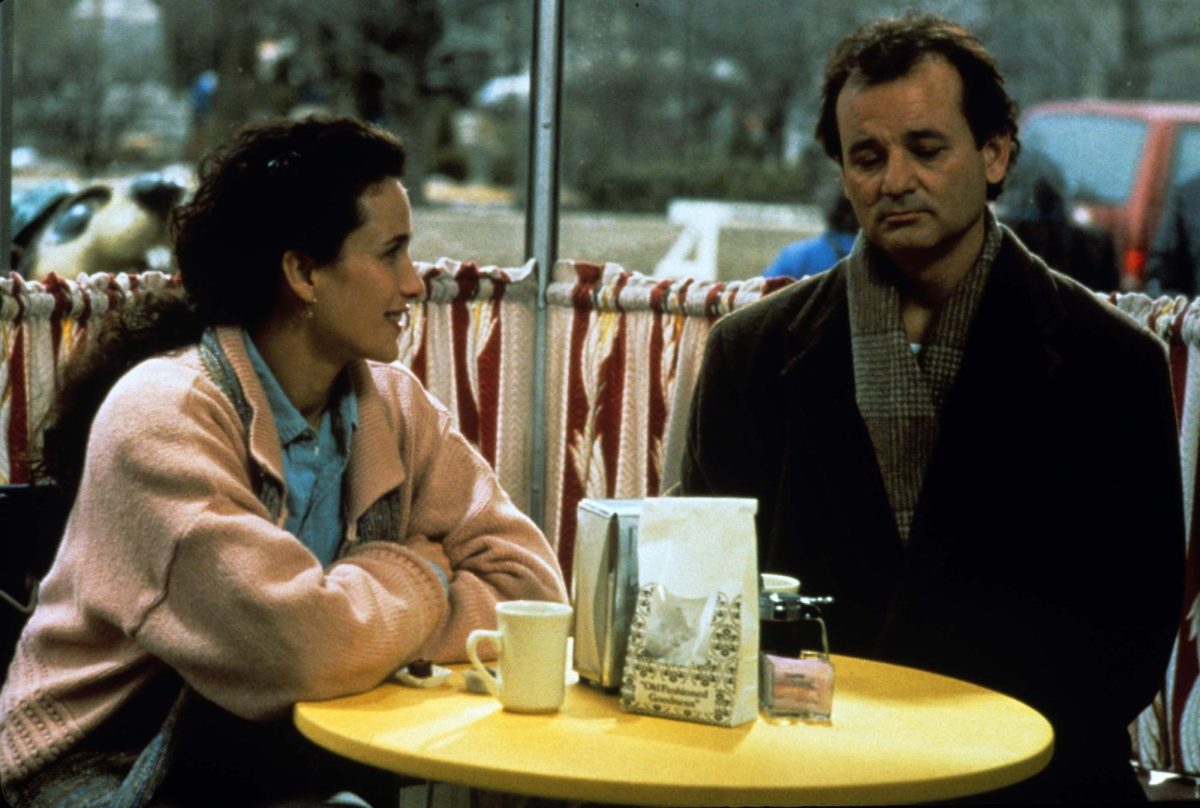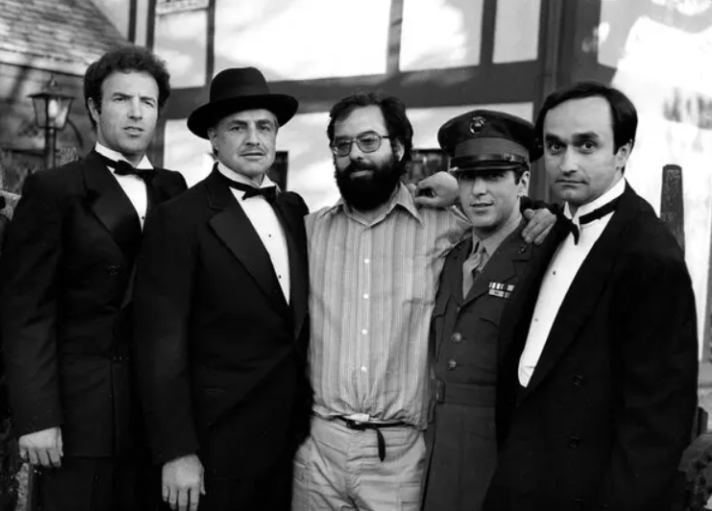The two films, “Bringing Up Baby”, and “Groundhog Day” both depict romantic relationships in a comedic way to discuss themes of love and personal growth. However, both films use vastly different plot perspectives and twists in order to achieve this. For instance, in “Bringing Up Baby,” the chaotic twists of the plot and disobedience from societal class rhetoric drives the romance between Susan and David. These chaotic twists cause David and Susan to eventually become inseparable, over the span of time. However, In “Groundhog Day,” Phil builds a short term, romantic relationship with Rita while focusing on personal growth through the repetition of re-living the same day. In conclusion, both films show viewers the plot elements commonly found in romantic comedies, such as initial dislike between main characters, the lead comedic character pursuing the romantic relationship, and the change of mindset in the characters that allows a romantic relationship between the characters to be introduced, in similar or different ways than the traditional romantic comedy genre.
The first element that we can discuss deals with the initial relationship between the two main characters. In romantic comedies, it is common for the two main characters, later involved in a romantic relationship, to dislike each other’s presence, however, the characters usually have some sort of connection and are not able to escape each other. In “Bringing Up Baby” this is executed in an argumentative tone. In the first few scenes of the movie, David and Susan are drawn together by Susan stealing David’s belongings, claiming that he is being greedy. For instance, when Susan steals David’s car and his golf ball, which makes David be completely taken over by Susan leading the film. This makes David, sensibly dislike Susan, and he attempts to escape his association with Susan throughout the movie because of the chaos that Susan brings to his life. However, defying viewer’s initial expectations, David falls head over heels for Susan and the chaotic, young-minded spark that she brings into his life. In “Groundhog Day,” this plot element is executed differently, but still gets the similar relationship between the main characters shown. For example, in the first scenes of the movie, Phil wakes up with a negative attitude on life, and goes about a normal day. Rita, his co-worker, looks at life in a more positive light. When it is time to report the results from the Groundhog, Rita seems enthusiastic about the news, while Phil seems disinterested and negative, having to put on a fake persona while being on camera. Phil’s lack of curiosity and motivation for life leaves Rita with a bitter taste, making her dislike Phil’s presence. This difference in motivation and attitude splits Rita and Phil from forming a relationship with each other, because of the difference of mindset they have. The difference in outlooks can similarly be found in “Bringing Up Baby”, when David’s initial ideal outlook is to stick to a structured lifestyle, while Susan can only focus on bringing chaos into her life to brighten her daily life. Therefore, both films adhere to the traditional way of romantic comedies in the sense that both films utilize the element of a restricted relationship between the main characters.
The second commonly found plot element found in romantic comedies is the lead character in the relationship that pursues the relationship. For “Bringing Up Baby,” this is Susan. For “Bringing Up Baby”, this is Susan. Throughout the movie, Susan uses her charming personality and chaotic ways in order to lure David into getting involved with Susan’s shenanigans. Some examples of this are when Susan steals David’s belongings, Susan fakes herself falling to free the leopard, Susan steals David’s wedding clothes, and persuades David to call the zoo to stop them from catching her aunt’s leopard. From the beginning of the movie, the audience can gauge that Susan is the leading character of pursuance in the relationship. However, in the later end of the movie, the audience learns that the pursuit of Susan ends up being successful because of David’s love for the adventurous life Susan brings to him. In the instance of the lead pursuing character being the woman in the relationship, “Bringing Up Baby” does not adhere to the traditional ways of a romantic comedy because of the gender roles being reversed. Usually, in traditional romantic comedies, the woman is known to be shallow and emotional, while the man usually takes lead of the situation and pursues the woman. Therefore, Susan and David do not follow the traditional gender roles. In “Groundhog Day”, this plot element is similarly executed. However, in this movie, the gender roles in this plot element adhere to the traditional romantic comedy. In this movie, Phil, the main character, gets stuck in a loop that involves him reliving the same day. Once Phil finds out that this loop makes him devoid of consequences, he decides to pursue Rita by utilizing the knowledge he can gain from the repetition of the same day. Initially, Phil’s pursuit over Rita seems to work because of his sharp memory over her personal likings and mannerisms. However, Phil is never able to get Rita’s true appeasement, and is left in a repetition of the same day. In the end, his pursuit for Rita becomes successful because Phil is able to break the curse by becoming truly happy and doing good deeds for people in the town. In conclusion, the common plot element of the lead pursuing character in the romantic comedy relationships can be found in both “Groundhog Day” and “Bringing Up Baby.” However, While “Groundhog Day” uses this plot element to adhere to traditional romantic comedies, “Bringing Up Baby” does not adhere to the traditional romantic comedy because of its reversed gender roles in the execution of the plot element.
The final plot element that both “Groundhog Day,” and “Bringing Up Baby” have that is common in romantic comedies is the change in mindset that one or more characters have, in order to build a relationship between the two main characters. In “Groundhog Day,” the repetition of the same day allows Phil to go through numerous psychological changes because of repeated actions attempted throughout the loop. In the beginning of the loop, Phil generally has a negative attitude towards life and the loop he is sentenced to. Briefly after, Phil realizes there are no consequences to his actions. This causes Phil to “test the waters,” and use the loop to benefit only himself. For instance, when Phil decides to disobey public law and endanger his friends when driving them home from the bowling alley or when Phil pursues Rita in a selfish way, treating her as if she was a simple object to tame. Initially, Phil feels empowered by the freedom he is allowed to do selfish acts to benefit him. However, once he realizes that no impact or goals are stemming from his actions, and that Rita is not willing to fall for him because of his selfish actions, he falls into an even deeper depression than the beginning of the movie. This deep depression leads Phil into trying to steal the Groundhog, and he tries to commit suicide. Nonetheless, these actions do not change Phil’s outcome because of the never-ending cycle he lives in. Therefore, Phil realizes the only way to make an impact is by doing good for the town. Ever since this realization, Phil does good actions such as changing tires, saving a boy from falling, and saving a choking man. Rita, a compassionate person realizes the great qualities that Phil possesses and falls in love with Phil’s new-found charisma. As a result, Phil is able to break the loop. The development of personal and psychological growth that Phil has empowers him to be able to build a relationship with Rita. In “Bringing Up Baby,” Susan’s persona stays mostly the same or similar throughout the movie. However, David’s mindset changes drastically throughout the movie. For the first scene of the movie, the audience is introduced to David as he is known as a sophisticated man who owns a museum. Prior to Susan, David has his life set up, he is getting married and almost has the final piece for his statue in his museum. However, later Susan brutally embarrasses him and he seems to be reluctant to be involved with Susan. As time goes on, Susan finds every way possible to keep David from leaving her. Her creative ways keep David with her, and eventually David discovers his lust for adventure. In the end, David confesses that actually the day spent with Susan was the “most fun” he’s ever had, and David accepts to build a life and relationship with Susan. In romantic comedies, the plot element of personal growth from one or another character causes a relationship to be built between the two main characters. In both “Groundhog Day”, and “Bringing Up Baby,” this is found to be true and both films adhere to the traditional romantic comedy.
In the films, “Groundhog Day” and “Bringing Up Baby”, both use common plot elements in order to create a romantic comedy. The plot elements used include initial dislike between main characters, lead comedic character pursuing relationship, and the change in mindset that allows for the characters to build a relationship. In combination with the focus on popular psychological topics such as self-love, female lead character, and personal growth, both films execute these plot elements throughout the movie. However, both films go about it in different ways and often may not adhere to the traditional romantic comedy.







